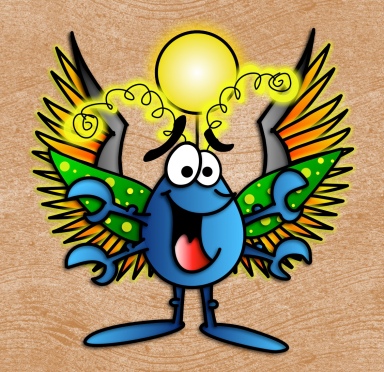
Found this sculpture on Flickr. It was taken in North Carolina, US
… via a team of dung beetle loving researchers
Ig Noble awards are about recognizing research that makes you think and then laugh
Marcus Byrne and his team of dung beetle researchers were awarded the an Ig Noble prize in biology and astronomy for their research into the dung beetle and its ability to navigate via the stars.
Check out his interview at the Sustainable Lens for the full story behind this incredible beetle.
Image credit: Sustainable Lens
Download Doug the Dung Beetle – The long roll home for FREE!
As part of a promotion for the release of Martina’s next kid’s picture book, she wanted to spread the word of me – Doug! So please, if you’ve ever had a twitch to look at my book, but didn’t, here is your opportunity to do so for absolutely free. And as a favour to me, spread the word with your friends by sharing this post. Give them the gift of humour and dung, all in the one neat little package!
But offers like this don’t last forever. So go on, click here to visit NoiseTrade for your free copy (suitable for your Kindle, iPad and more).

The Ancient Egyptians watched my great, great, great, great ancestors as they rolled their dung balls across the hot Egyptian sands. They made a connection between dung ball rolling and the rolling of the sun. It was obvious, the Dung Beetle was the God in charge of the sun!
They believed that every morning Khepri would appear and roll the sun at sun rise. He would then continue rolling the sun across the sky until sunset. Khepri disappeared overnight, but wasn’t resting (dung beetles never rest). He continued with his roll into the underworld and faithfully reappeared the following day at dawn.
He was given the name Khepri, which comes from the word kheper – to emerge or come into being.


Pretty much any animal who is a veggie eater and has a relatively poor digestive system is an ideal candidate for this ingenious invention.
To make your own, simply gather some elephant poo, wash it to leave behind the raw fibre and then boil it for a long, long time. Blend the mix to soften those poo fibres, add a splash of colour if desired and slop onto a sieve like mould to dry.
Bingo – Poo Paper! And what’s more – it doesn’t smell (pity that).
In case you’re wondering, this post was inspired by a conversation I had recently with a human who couldn’t seem to understand why us dung beetles are obsessed with poo. In their defence, they argued that humans just weren’t as inspired by something as yucky as poo. That prompted a bit of research on the internet and not to my surprise, there are humans who share the same interest in poo, just like me. And if you do a quick Google yourself, you’ll see that there are many companies offering this delightful product.
A poo-fect present to give your loved one next birthday!
You may recall from a previous post that us dung beetles use the sun’s polarization to guide us in a straight line back home. Like many other insects, we have photoreceptors that enable us to see the polarisation. Well, at night we use the moon’s polarisation, rather than the sun.
But what happens when the moon is hiding?
As you would expect, the dung beetle just gets on with it. A research team noticed that hard working night shift dung beetles were still busy rolling (in straight lines home, not wandering around aimlessly) even when the moon was no where to be seen.
So, in a cunning plan, the scientists devised yet another experiment for us dung beetles to tackle (and as usual, we did not disappoint)
This experiment involved placing an unsuspecting dung beetle and its prized dung ball in a large inverted circular drum. This stopped the beetles from seeing anything land based.
One by one, they placed beetle after beetle into the drum and observed the following:
So, now we know why you never see a dung beetle wearing a hat while working (it just makes work 6 times harder)
But what else did the scientists figure out? The experiment demonstrated that the moon’s polarisation offered one form of navigation, but that the ‘line’ of the Milky Way stars offered an alternate navigation source, when the moon was nowhere to be seen. Although dung beetles have ‘simple’ eyes and cannot see individual stars, they can see the sparkling line of the beautiful stars within the Milky Way.
References: To my surprise two research teams have undertaken similar research studies into dung beetle night rolling. This article by New Scientist and The New Yorker were particularly well written. Would rather watch than read? Check out this DNews report – not surprisingly, it comes with some ‘poo’ jokes.